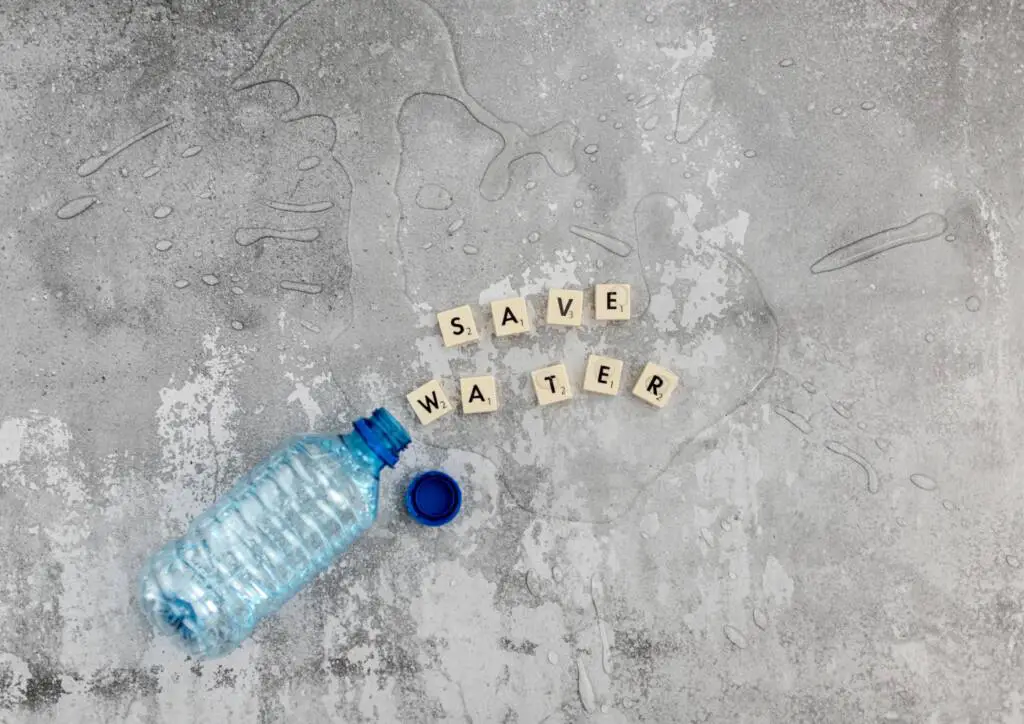Water Scarcity: Global Crisis

Water scarcity is a pressing global crisis that continues to threaten the livelihoods and well-being of people around the world. With increasing demand for water due to population growth, urbanization, and industrialization, many regions are experiencing shortages of this vital resource. As a result, millions of people lack access to clean and safe drinking water, leading to a myriad of health issues and economic challenges.
The impact of water scarcity is far-reaching, affecting not only human health and well-being, but also agriculture, industry, and the environment. Without adequate water resources, food security is jeopardized, ecosystems are degraded, and economies are destabilized. Addressing this crisis requires collaborative efforts at the local, national, and international levels to ensure sustainable water management practices and equitable distribution of this precious resource.
In this article, we will examine the causes and consequences of water scarcity, as well as explore potential solutions to mitigate the impact of this global crisis.
What is Water Scarcity?
Water scarcity is an increasingly pressing issue that threatens the availability of clean and safe water for human consumption, agriculture, and ecosystems. It occurs when the water demand exceeds the available supply in a particular region or when the quality of water is deteriorating, making it unfit for use.
Key Takeaways:
Water scarcity refers to the lack of access to sufficient and affordable water resources.
It can lead to detrimental consequences for the environment, society, and the economy.
Causes of water scarcity include overpopulation, climate change, pollution, and inadequate infrastructure.
Defining Water Scarcity
Water scarcity can be formally defined as the situation when the water demand exceeds the available amount during a certain period or when poor quality restricts its use. It affects not only the availability of water for drinking, cooking, and sanitation but also for agriculture, industries, and ecosystems.
The impact of water scarcity on the environment and society is profound. It can lead to the depletion of groundwater, drying up of lakes and rivers, and disruption of delicate ecosystems. Societal consequences include increased poverty, conflicts over water resources, migration, and compromised health and hygiene practices.
The causes of water scarcity are varied and interconnected. The primary drivers include growing population, climate change-induced droughts, pollution from industrial activities and agriculture, uneven distribution of water resources, and inadequate water management infrastructure.
Effects and Implications of Water Scarcity
The consequences of water scarcity are far-reaching and affect various aspects of life. One of the most significant impacts is on agriculture and food production. Insufficient water availability leads to reduced crop yields, lower agricultural productivity, and increased food prices. This, in turn, exacerbates food insecurity and malnutrition.
Economically, water scarcity can cripple industries that depend on water, such as manufacturing and energy production. It can also hamper economic growth and development, as water scarcity limits investment opportunities and hinders productivity.
Furthermore, water scarcity poses significant health risks. In areas with limited access to clean water, people often resort to using contaminated sources, leading to waterborne diseases such as diarrhea, cholera, and typhoid fever. Insufficient water for sanitation and personal hygiene also contributes to poor health and hygiene practices.
Water Scarcity around the World
Water scarcity is a global issue, but its extent and manifestations vary across different regions. In developed countries, water scarcity often stems from mismanagement and overconsumption, with water resources being depleted faster than they can be replenished. This is particularly evident in arid regions such as the southwestern United States and Australia.
On the other hand, developing countries face their own set of challenges regarding water scarcity. They often lack the infrastructure and resources to provide adequate water supply and sanitation services to their populations. Additionally, they are more vulnerable to the effects of water scarcity due to limited access to alternative water sources and less resilient agricultural practices.
There are several noteworthy case studies of regions deeply affected by water scarcity. Examples include the Middle East, where countries like Yemen and Jordan struggle with water shortages exacerbated by population growth and political conflicts. In Africa, the Sahel region faces recurrent droughts, leading to water scarcity and food insecurity.
Solutions to Alleviate Water Scarcity
Addressing water scarcity requires comprehensive strategies that involve various stakeholders. Some effective measures include water conservation and efficiency practices, sustainable water management, investments in water infrastructure, and technological innovations.
Water conservation and efficiency measures involve reducing wastage and optimizing water use. This can be achieved through methods such as improving irrigation techniques, promoting water-saving practices in households and industries, and implementing efficient water distribution systems.
Sustainable water management practices aim to ensure the long-term availability of water resources. This includes proper watershed management, rainwater harvesting, reusing treated wastewater, and protecting ecosystems that provide essential water services.
Investing in water infrastructure is crucial for delivering clean and safe water to communities. This involves constructing dams, reservoirs, pipelines, and wastewater treatment plants, as well as improving water distribution networks and sewage systems.
Technological innovations play a significant role in managing water scarcity. Advances in desalination technologies, water purification, and remote sensing technologies allow for more efficient water use and resource monitoring. It is essential to support research and development in these areas to find sustainable solutions.
Role of Government and International Organizations
Governments play a vital role in addressing water scarcity through policy interventions and regulations. They can enact laws and create incentives to promote water conservation, regulate water usage, and ensure equitable access to water resources. Additionally, they should foster partnerships with international organizations, NGOs, and the private sector to drive collaborative efforts.
Internationally, various organizations are working towards addressing water scarcity. The United Nations launched the Sustainable Development Goals, which include a target to ensure the availability and sustainable management of water and sanitation for all. Organizations such as the World Bank, UN-Water, and WaterAid work to provide financial, technical, and logistical support to countries grappling with water scarcity.
Collaborative initiatives, such as joint river basin management and transboundary agreements, are also critical to effectively manage shared water resources and prevent conflicts. Examples include international agreements like the Nile Basin Initiative and the Mekong River Commission.
Community Engagement and Individual Actions
Addressing water scarcity requires the active participation of individuals and communities. Promoting water conservation at the grassroots level involves educating people about the importance of water, providing practical tips on reducing consumption, and encouraging behavioral change.
Education and awareness campaigns play a crucial role in fostering a culture of water stewardship. These initiatives should target schools, households, and industries and focus on promoting sustainable water practices, responsible water management, and the value of water for ecosystems and future generations.
Individual responsibility in water usage is vital for mitigating water scarcity. Each person can contribute by conserving water in their daily activities, such as taking shorter showers, fixing leaks, and using water-efficient appliances. Collectively, these actions can make a significant difference in reducing water consumption.
The Future of Water Scarcity
The future of water scarcity presents both challenges and opportunities. With the global population projected to increase, the water demand will rise significantly. This will put additional strain on already limited water resources, especially in regions prone to water scarcity.
However, innovation and solutions offer hope for mitigating the impacts of water scarcity. Advancements in technology, research, and policy can lead to more sustainable water management practices, improved water efficiency, and better water governance.
Governments, organizations, and individuals must work together to address the complex and multifaceted issue of water scarcity. By implementing comprehensive and integrated approaches, we can ensure the availability of clean and safe water for present and future generations.
Conclusion
Water scarcity is a global crisis that requires urgent attention and concerted efforts. Its consequences are far-reaching, affecting ecosystems, societies, and economies. By understanding the causes and effects of water scarcity, exploring innovative solutions, and engaging governments, international organizations, and communities, we can work towards a sustainable future with abundant and accessible water resources for all.
https://7thavewellnessblog.com/?p=3739
https://water.org/
https://www.unicef.org/
FAQs
Q: What is water scarcity?
A: Water scarcity refers to the lack of sufficient available water resources to meet the demands of a region’s population.
Q: How does water stress contribute to a global crisis?
A: Water stress occurs when the water demand exceeds the available supply. This can lead to water scarcity, impacting various regions worldwide and contributing to a global crisis.
Q: Which regions are particularly affected by water scarcity?
A: Regions such as North Africa and the Middle East experience high levels of water stress, making them prone to water scarcity issues.
Q: Why is access to water important for economic development?
A: Access to water is crucial for economic development as industries, agriculture, and communities all rely on water for various purposes. Without adequate access to water, economic growth can be severely hindered.
Q: What are some measures to cope with water scarcity?
A: Strategies such as water conservation, efficient water management practices, investing in water infrastructure, and promoting water recycling can help in coping with water scarcity challenges.
Q: How does water quality relate to water scarcity?
A: Poor water quality can exacerbate water scarcity issues as contaminated water sources may not be suitable for consumption or other essential purposes, further limiting the available water resources.
Q: What is the significance of World Water Day in addressing water scarcity?
A: World Water Day serves as a reminder of the importance of sustainable water management and the need to address global water challenges, including water scarcity, to ensure a secure water future for all.








